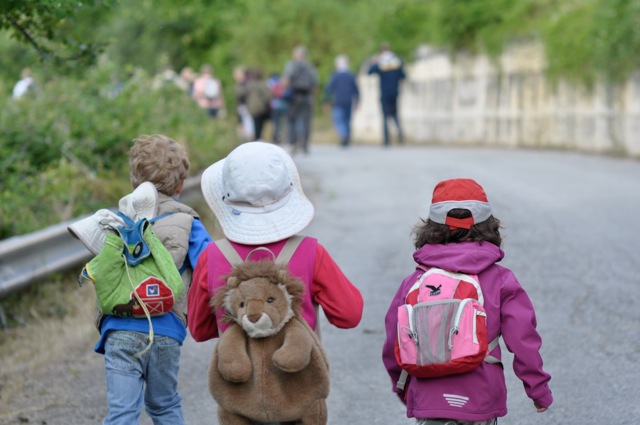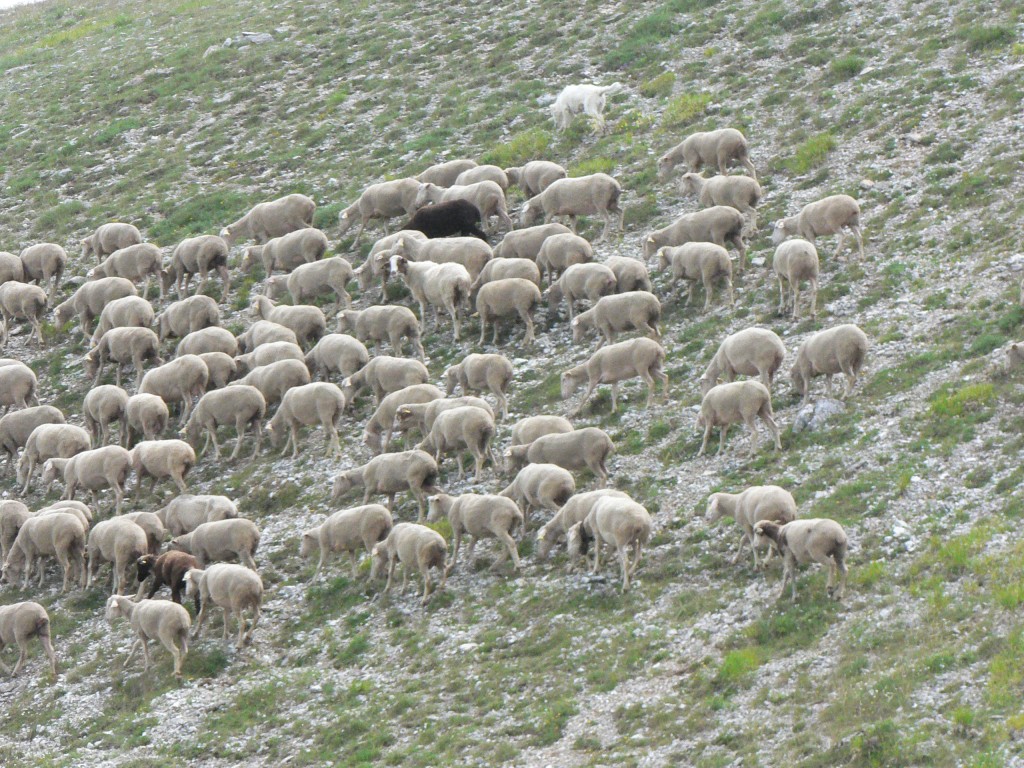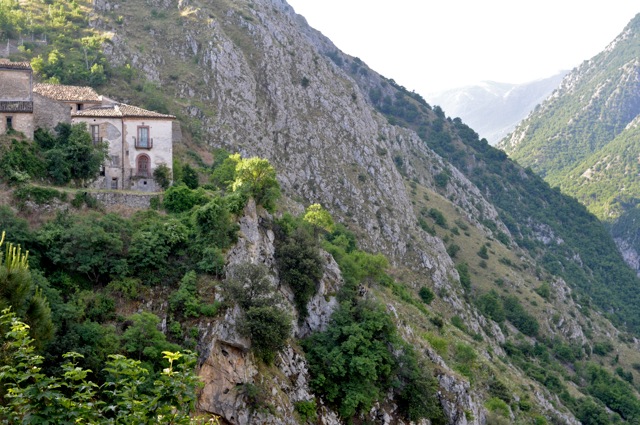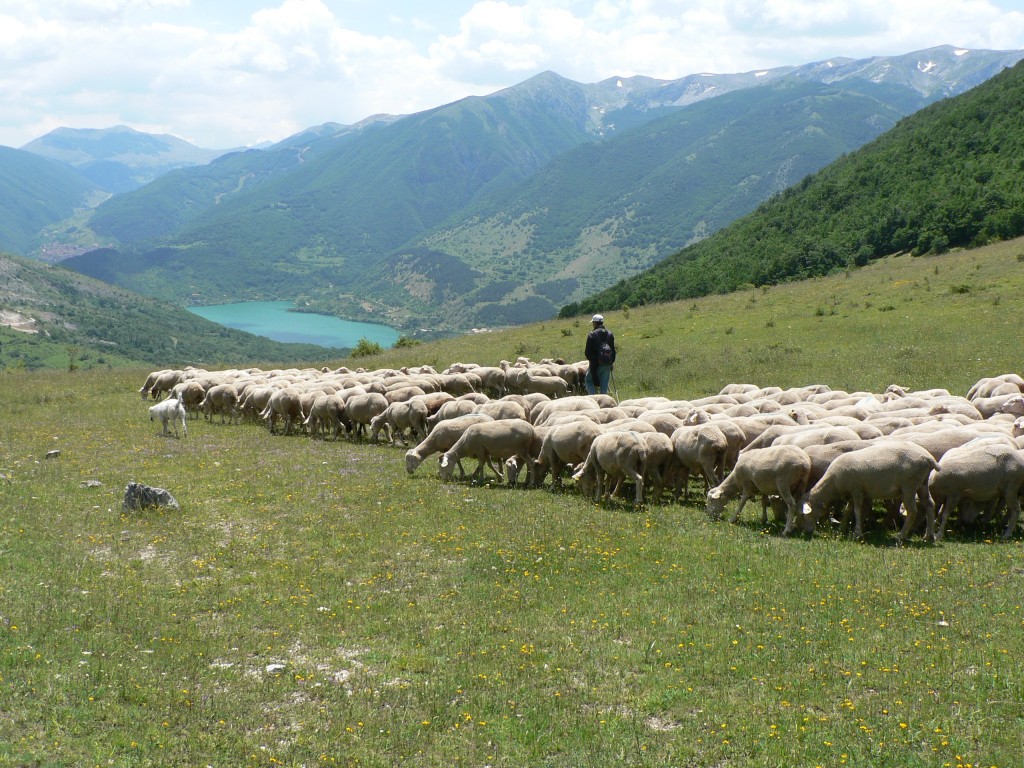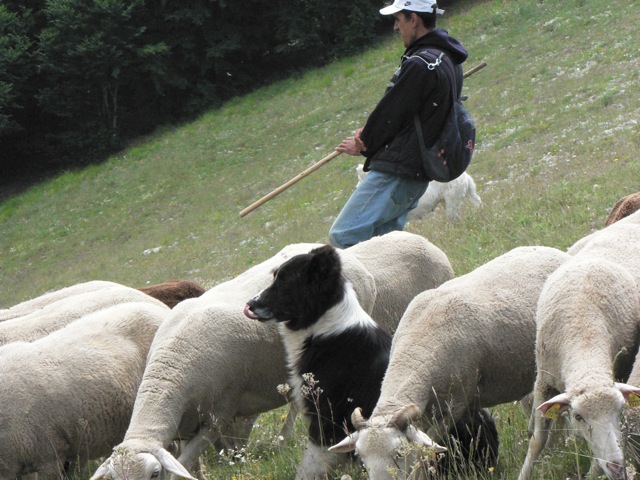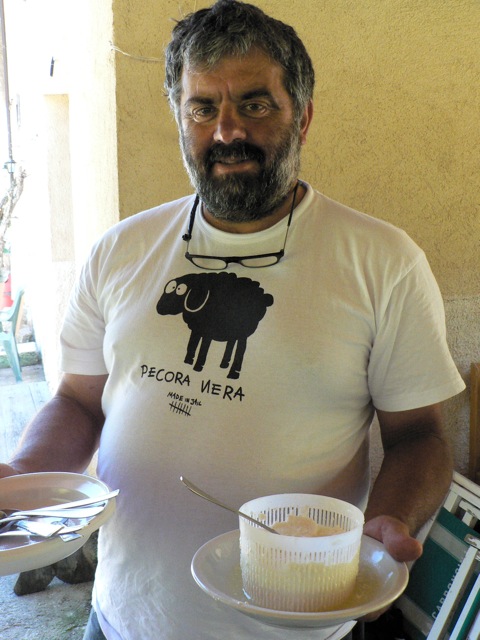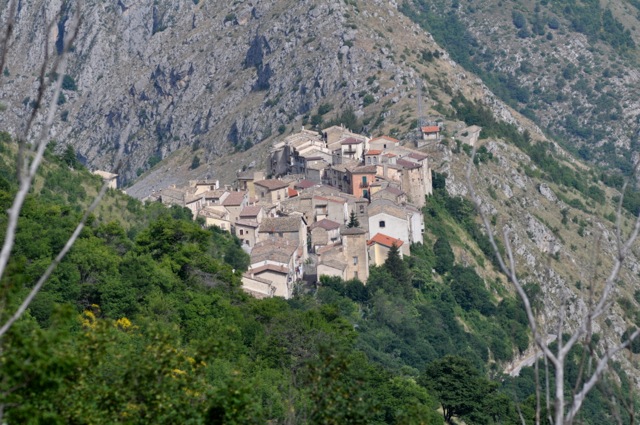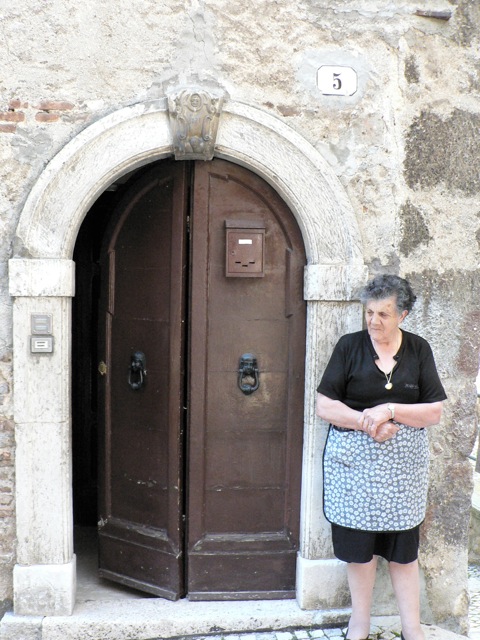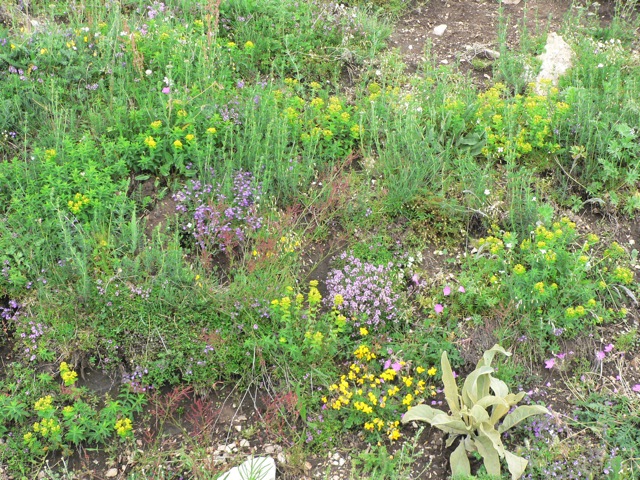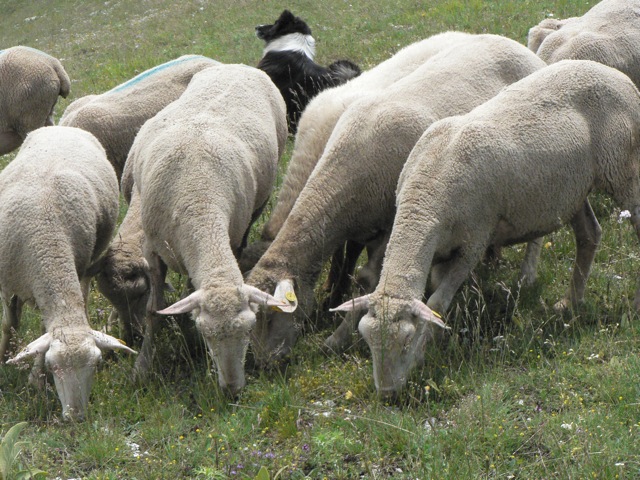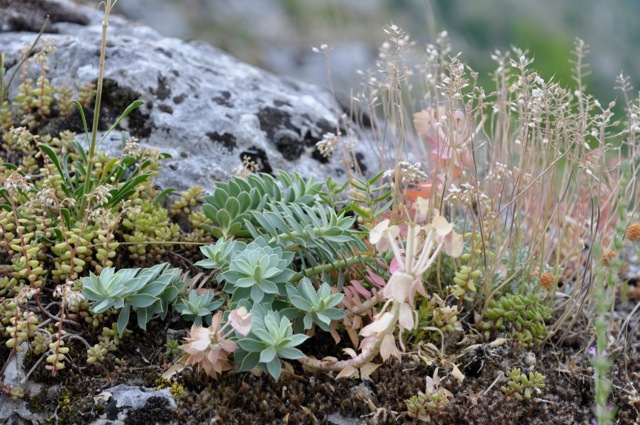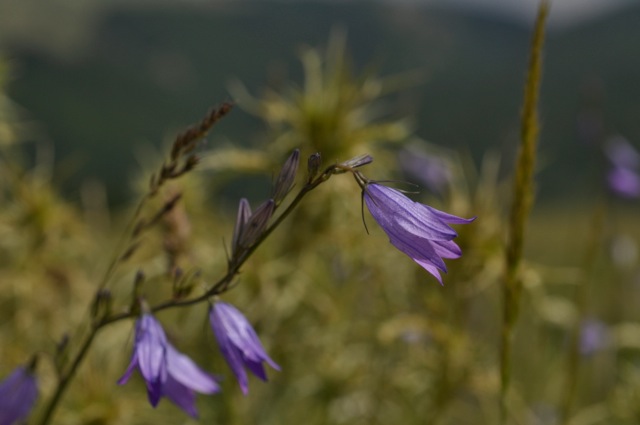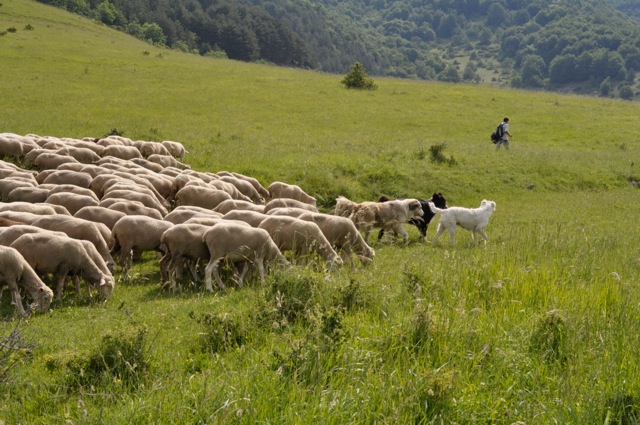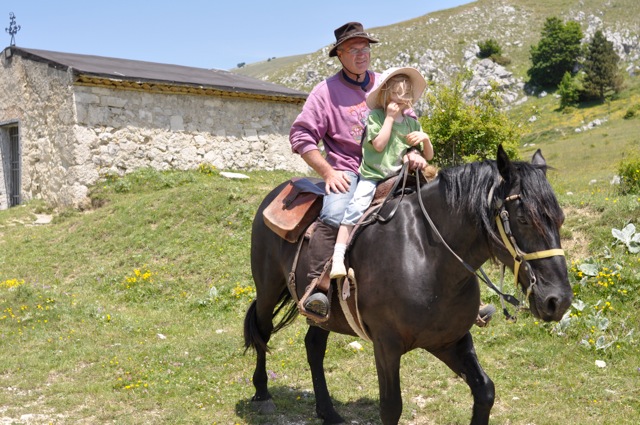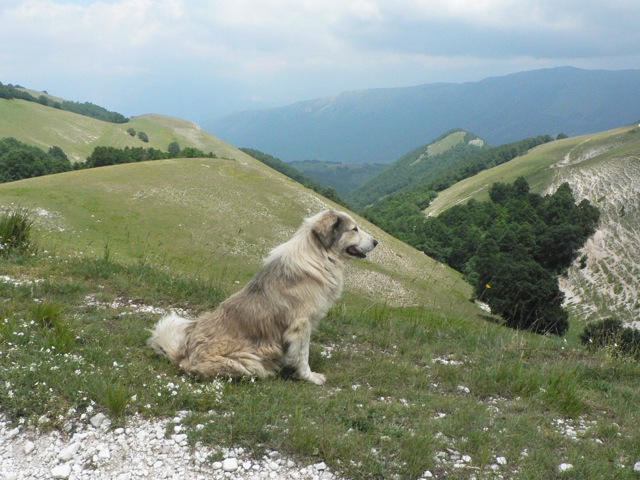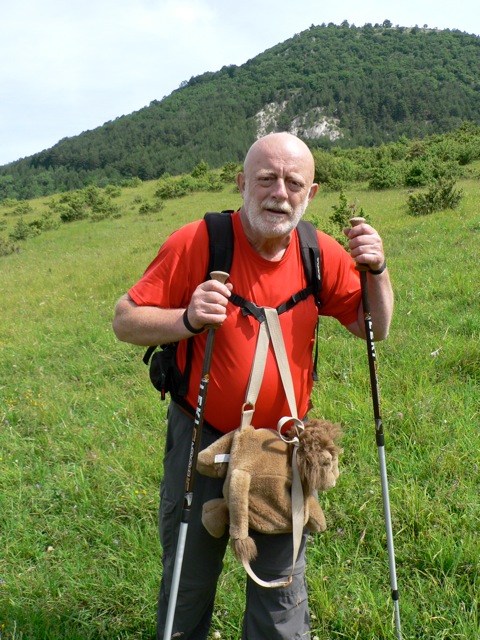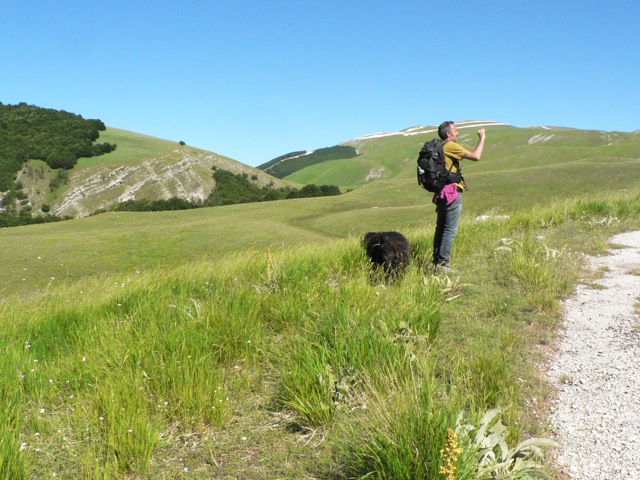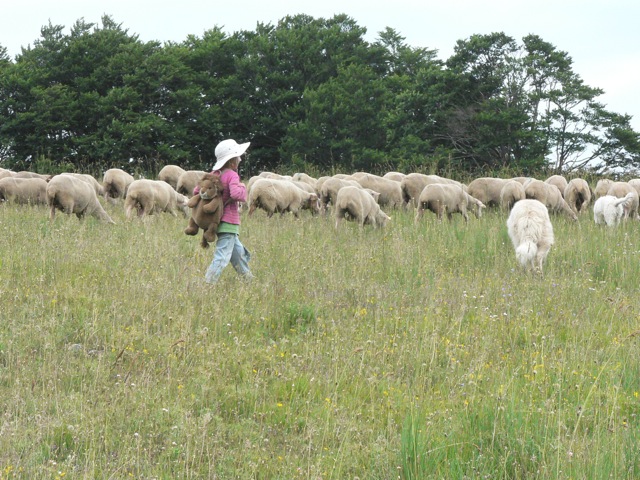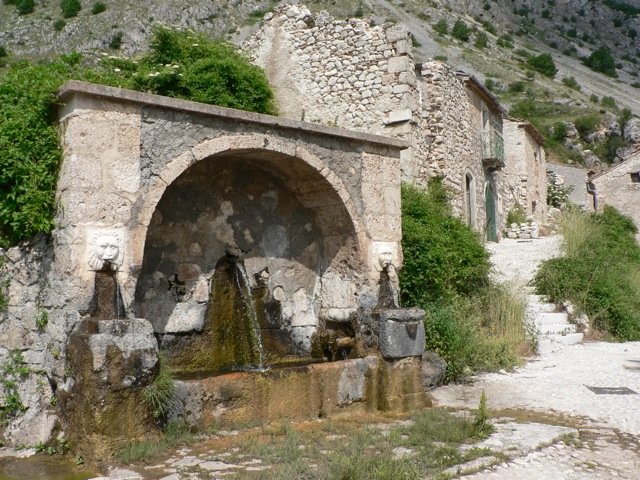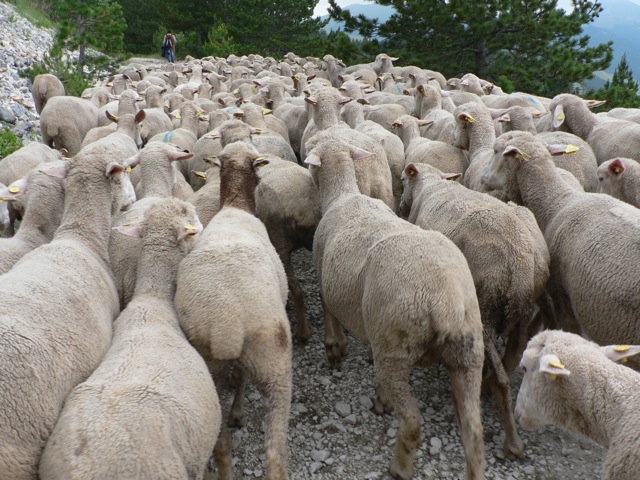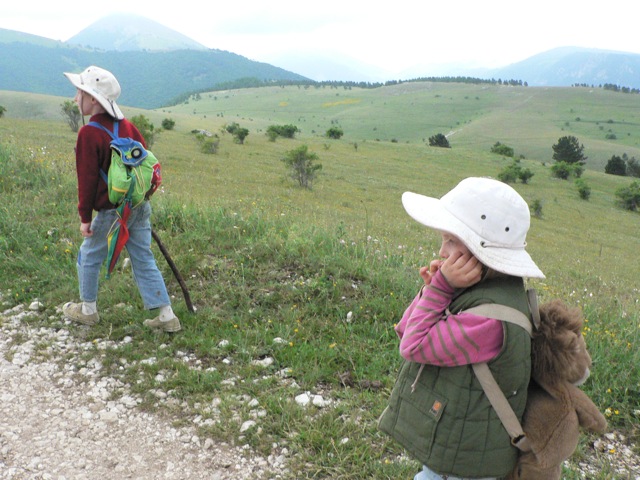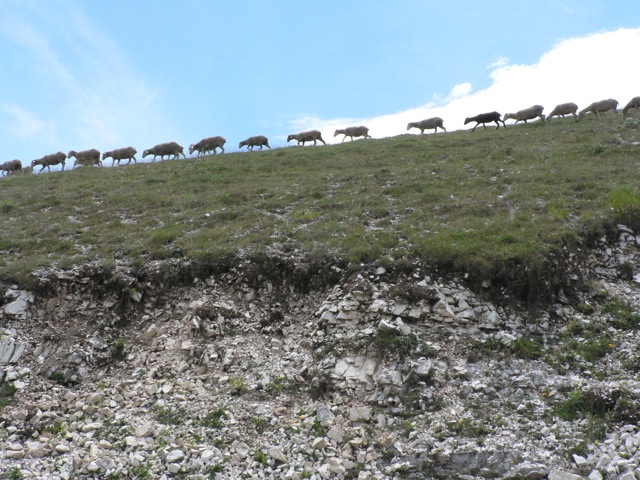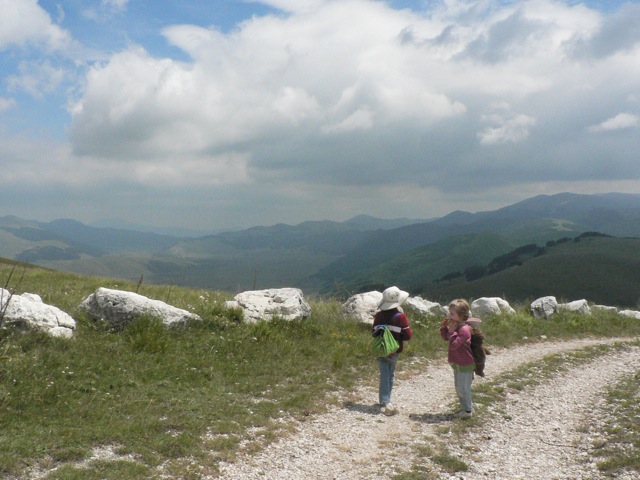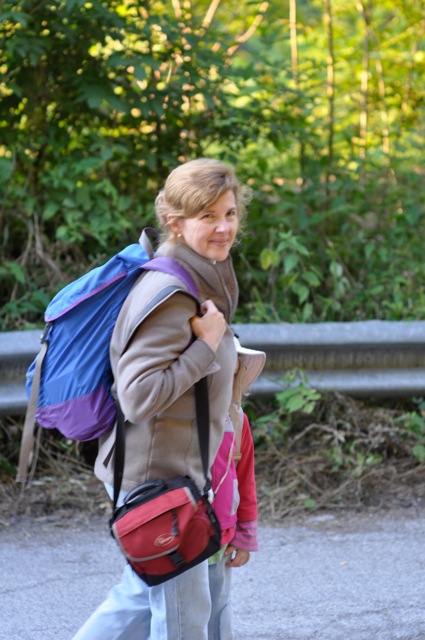La Transumanza
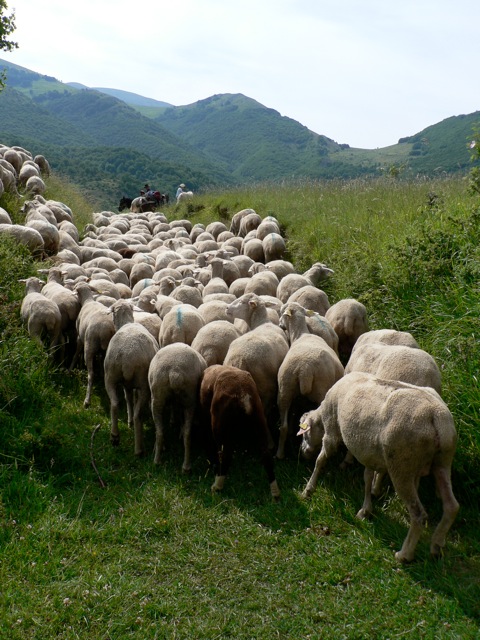
Some travel experiences exceed one’s expectations. Last weekend’s Transumanza, which began 100 minutes southeast of Rome, was for me such an experience.
I was unprepared for the Transumanza. I was unprepared for the sense of collectivity formed of 350 Sopravissana sheep, seven sheepdogs, three shepherds and 25 would-be shepherds, including three children (aged five, five and seven.)
I was unprepared for the sweetness of the golden morning light, when we set out shortly after 5 AM on Saturday. I was unprepared for the chorus, indented by the sound of sheep’s bells, or more birdsong than I have ever heard before.
I was unprepared for the ever-evolving scents of herbs underfoot : of mint and thyme and wild arugula and fragrant broom and yet more mint and thyme. I was unprepared for the beauty of the still stone villages we walked up to, ones where tourism is entirely unknown.
Transumanza means “crossing the land”. Traditionally the Transumanza is the twice yearly migration of sheep and people (also cows) from winter-appropriate lowlands (mostly in Puglia, some in Campania and Lazio) to the high altitude lush pastures of the Abruzzo. For at least 3000 years, Abruzzo landscape and populations have been shaped by the traditions of their sheep raising communities. Sheep rearing has provided the livelihood for a substantial part of the population, contributing significantly to its social, economic and cultural fabric.
Towns, songs, industries, traditions, diet, methods of communication, biodiversity (the scattering of plant populations from one area to the next ) : all of these phenomena are born of the long history of the Transumanza.
These semi-annual migrations also produced a regulated system of wide grassy tracks, known as tratturi, 350 to 400 feet wide and extending for several hundred kilometers. (You can see these as you fly over them in parts of Puglia). Off the tratturi were feeder routes that were equally well-developed. Our routing was principally along historic tratturi feeding routes.
The Transumanza project we partook in, which runs three weekends a year, with shorter walks organized on request, shows participants how compelling it is to protect rural Abruzzo and its methods of traditional farming.
Participants become natural advocates and an important voice in shifting public opinion towards an insistence on national, European Union and United Nations support of nomadic sheep farming (France and Spain both offer public support of these programs.)
Behind all of this is a visionary called Nunzio Martelli.
I was unprepared for the quality of the cheeses made by this kind, great bear of a man.
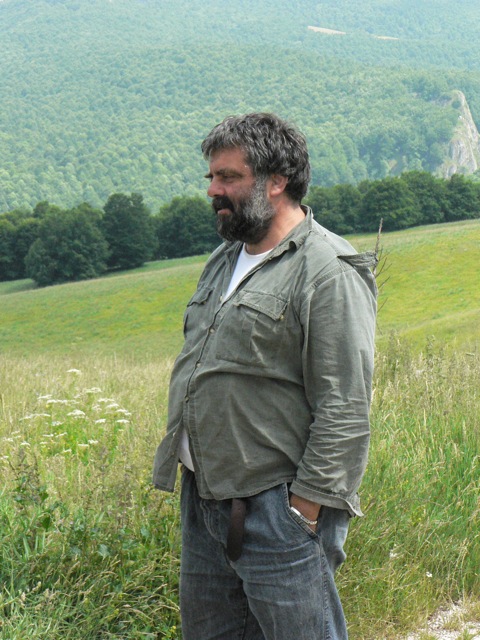 His warm ricotta was the star of our sunrise breakfast on Saturday. Seven organic sheep cheeses were for me the centerpiece of our farmhouse dinner the night before. The cheeses, all made of raw milk, appeared at every meal throughout our Transumanza weekend.
His warm ricotta was the star of our sunrise breakfast on Saturday. Seven organic sheep cheeses were for me the centerpiece of our farmhouse dinner the night before. The cheeses, all made of raw milk, appeared at every meal throughout our Transumanza weekend.
Never have I enjoyed any cheeses as much. (Meat eaters will enjoy the lamb, which appeared both evenings; cuisine is as traditional as it can get, including superb breads baked in 22 pound rounds.) Nunzio’s pecorino classico, for example, is young, full flavored, aged three to six months, nutty and with the taste of high mountain grass, herbs and flowers. It lacks the saltiness of many pecorinos and pairs well with local honeys.
Nunzio worries about the radical reduction in Abruzzo’s sheep population. Abruzzo once had 20 million sheep, and now there are only 200,000. That so few of his neighbors still partake in the Transumanza is a source of greatest concern for him.
In two long mornings, we walked from 1800 feet to 5300 feet.
Each morning’s efforts concluded with a long, leisurely lunch. Wine tasted delicious.
While nearly all of our walking was rural, we left the tratturo one afternoon for Scanno, a lakeside, mainly 18th century town which hums with life.
While traditional costumes have disappeared in much of Italy, I encountered one elderly women who was wearing the historic local dress : a very dark green full skirt with red hem, a close-fitting deep blue bodice with an ample apron and a lace trimmed chemise, with on her head a flat-topped cap.
We were 100 minutes from Rome.
The nature-made “rock gardens” along our paths were more beautiful than anything a mortal gardener can design.
The sheep nibbled on these of course.
They in fact rarely raised their heads from their foraging. In the coming months, as they graze in their summer pasture land, the shepherds will move them from patches of one plant to the next, subtly effecting the flavor of the milk that makes Nunzio’s cheeses.
Under the sheeps’ hooves are at least 120 identified varieties of herbs and indigenous wild flowers.
In late June, mint and buttercups seems to be what they liked most.
Walking is challenging in segments, but the pace — a sheep’s rambling pace — is always slow.
The children were assisted time-to-time by Nunzio’s friend Francesco and his trusty horse Dollaro.
They were enchanted by the company of the blue butterflies that travelled with us, by the affectionate dogs..
and the interesting banter of engaging, multinational travelmates like Domenico (below.)
Nearly everyone spoke at least some English.
Everyone had their own private reason for engaging in the Transumanza.
The sheep amble forward with a child’s gentle urging.
The children feel that they have a job to do. They like dipping their feet in spring-fed mountain fountains and streams.
They give names to many of the sheep.
The shepherds tell them about the character of each of the sheep (which one is a romantic, which one naughty, which one always sleepy, which one greedy, which one accident-prone.)
The shepherds show them which herb the sheep will nibble if they injure a hoof, and tell them about their own childhoods in Macedonia and Rumania.
Cell phones sometimes have no reception here.
As the 1908 “In the Abruzzi” states : “where is kindly Italy with its mist of olives, its garlands of vines ? This is no play place, it seems”.
We ended at the out-of-this-world Piano delle Cinque Miglie (Five Mile Plain), which is where we left the sheep, in the care of the shepherds and the seven dogs, until they retrace their steps when the first snows begin to fall.
Through my own travels, and research for our clients, I thought that I knew the Abruzzo. With the sheep however, I discovered another Abruzzo. The region where we walked for 22 miles (37 kilometers) — through gorges, World Wildlife refuges, through pastures and valleys, up hills, down hills, through sylvan glens of beech trees — is one I found thanks to the sheep. With them I took one of the great trips of my life.

Meet Marjorie
Insider’s Italy is an experienced family business that draws on my family’s four generations of life in Italy. I personally plan your travels. It is my great joy to share with you my family’s hundred-year-plus archive of Italian delights, discoveries and special friends.

